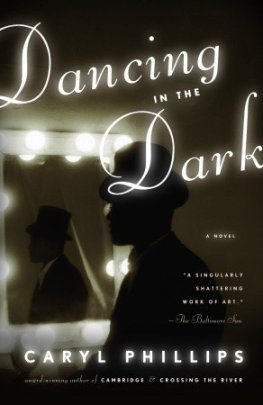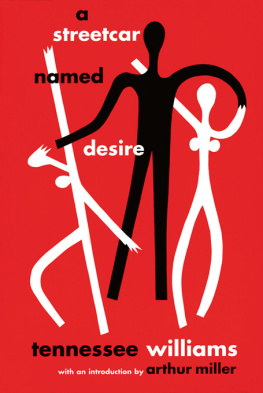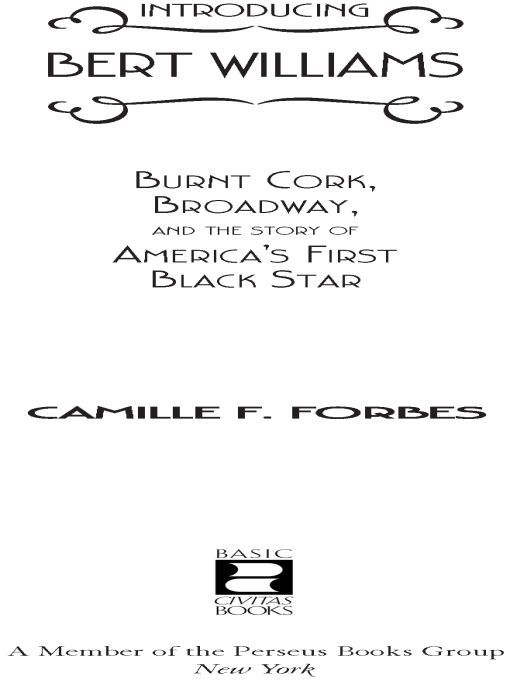Table of Contents
In memory of
Jackie Forbes and Liz Maguire,
two wonderfully dynamic women
In truth, I have never been able to discover that
there was anything disgraceful in being a colored
man. But I have often found it inconvenientin
America.
BERT A. WILLIAMS (1874-1922)
And behind that mask, he could say anything he wanted to.
BEN VEREEN ON BERT WILLIAMS
A Note on Usage
In this work, I use the terms black and African American interchangeably. I refrain from naming Williams as African American, however, because he always spoke of his ethnicity as West Indian. Instead I refer to him as black, or Negro, a term that he used to refer to himself. While the term African American is used to speak of black Americans, Negro was often utilized during the period to describe black people of various nationalities. With regard to the capitalization of the letter n in Negro, although it is always written in commentary and analysis with an uppercase letter, the original is retained in quotations. I do this with a desire to acknowledge the effort that the NAACP and others undertook to convince Americans of the need to capitalize the n, out of respect.
Preface
Black Bahamian comedian Bert A. Williams (1874-1922) captivated American audiences for more than a quarter century in a career that spanned from ca. 1890 to the end of his life. His dynamic stage presence and skill as a storyteller, pantomime, and songster astounded black and white audiences alike, who pronounced him The Greatest Comedian on the American Stage. During his career, Williams moved from the formulaic structure of late nineteenth-century minstrelsy to the independence of solo vaudeville performance and beyond. He became one of the most important black performers in American history. A trailblazer whose extraordinary achievements created opportunities for later generations of black entertainers, he also raised the bar for comic performance among both blacks and whites.
Striving to shed considerable light on the cipher that is Egbert Austin Williams, I explore the complexity of Williamss experience, illuminating the milieus in which he appeared throughout an illustrious career. The worlds of the medicine show, minstrelsy, Tin Pan Alley, the recording industry, black musical theater, vaudeville, motion pictures, and legitimate theater all contributed to Williamss work. He experimented, headlined, and matured as a performer as he worked in these various entertainment forms, which constituted much of the universe of nineteenth- and early-twentieth-century American popular entertainment. Williamss diversity in his abilities, which allowed him to travel through all these spaces, testifies to his unique strength as a performer. These entertainment forms deserve as much attention as the remarkable comedian who graced them with his effervescent theatrical presence. They receive as much attention here as do the challenges Williams faced during a career that began just as the embryonic institution of Jim Crow segregation concretized the divide between blacks and whites.
As I delve into vast entertainment worlds, I aim to reveal Williams. It is at times excruciatingly difficult to trace a life, however, particularly that of one who cherished his privacy as deeply as Williams did. Materials found primarily address his performances. Although a renowned entertainer, Williams remained reticent about his private life, protecting his interior world from the public eye. Seeking to unearth the details of his life in the face of archival challenges, I access Williams through various means: joke books, songs, interviews, letters, reviews, films, and tributes. I search for Williams both within and behind the mask of blackface, digging deeply despite archives that provide access mostly to his public face only. I remain loyal to those facts of Williamss life that rise to the surface, knowing that even all these efforts do not result in uncovering the whole truth of Williams.
Through that excavation, I find a compelling cryptic figure who demands our attention. Moving from black musical theater, in which he worked with his African American partner George William Walker, to Ziegfelds Follies, in which he often performed solo, Williams shifted from one location to another. He went from working with blacks to working with whites; from performing for both whites and blacks, to performing for whites often exclusively. After sixteen years of working with George, a bold partner who spoke on the duos behalf, Bert stepped out on his own. Creating his own terms of engagement, often at his peril, he broke new ground.
Previous eras have witnessed the manipulation of this man, the willful forgetting of this problematic figure in burnt cork. His representations of blackness onstage troubled those in the audience who desired radical resistance. His persistent use of blackface alienated those members of the public who demanded the rejection of convention. Yet during his life, Williams did endeavor to take control of his career and his image. He struggled to be seen as more than a comedian or a stereotype. He recognized his representative role among blacks, yet refused leadership. Honing his craft while maintaining his dignity, he reached out to his audience, but only so far. The rest of himself he withheld, remaining a mystery that baffled and titillated his audiences. How did a black Bahamian boy become The Greatest Comedian on the American Stage? He stood up and barked, on the streets of California.
The Early Years
Growing Up
Ladies and gentlemen! Do you have an ache of the body? A pain of the heart? No matter: step right up! Heres where youll find the cures to all of your suffering, now and forever!
In the clearing, the deep voice of a lanky, fair-skinned Negro boy boomed over the crowd hovering outside the circus tent. He thrilled to the sound of his own voice as well as the steady gaze of the enraptured throng, who stood gathered around him. This was poweras close to it as he had ever come. Merely sixteen years old, Egbert Austin Williams had quit high school to follow his dream of becoming an entertainer. He had been snatched up by the world of the medicine show.
A carnivalesque atmosphere of overwhelming displays, magnificent claims, and stentorian voices, the medicine show was more show than medicine. Under makeshift tents filled with booths, famous and infamous self-proclaimed doctors hocked elixirs and promised magic and miracles to their ecstatic audiences. Engaging the audiences with dramatic testimonials and tales of new worlds plumbed to discover exotic ingredients, the doctors took their public on flights of fantasy that amused, shocked, and thrilled. Crowds of awed frontiersfolk swarmed, vying for the merest glimpse, the slightest touch, the most meager taste. And charlatans eagerly catered to the publics craving, producing purported customers to illustrate their products effectiveness, and exhibiting circus-like freaks as the wretched unfortunates who went without treatment.


















